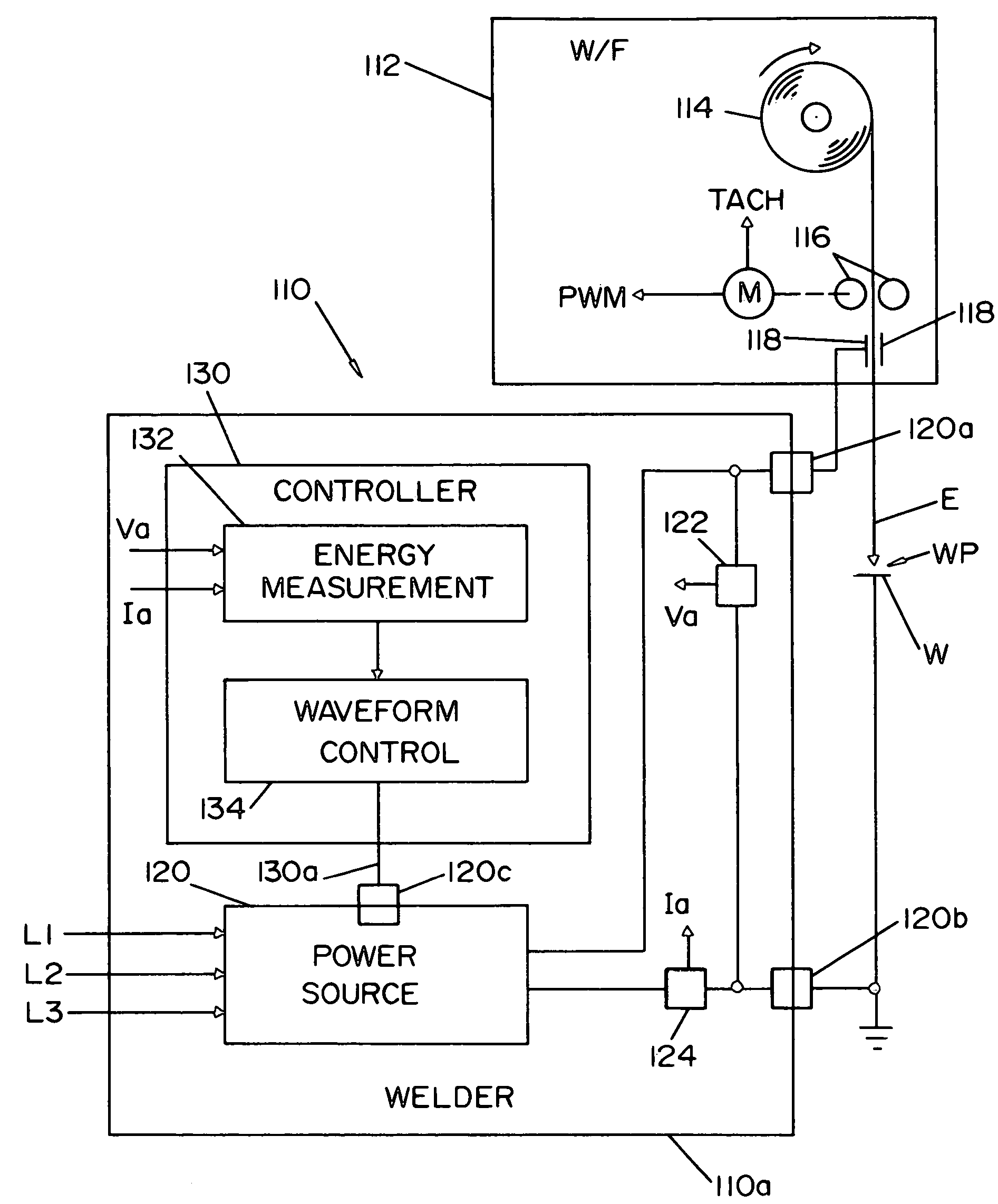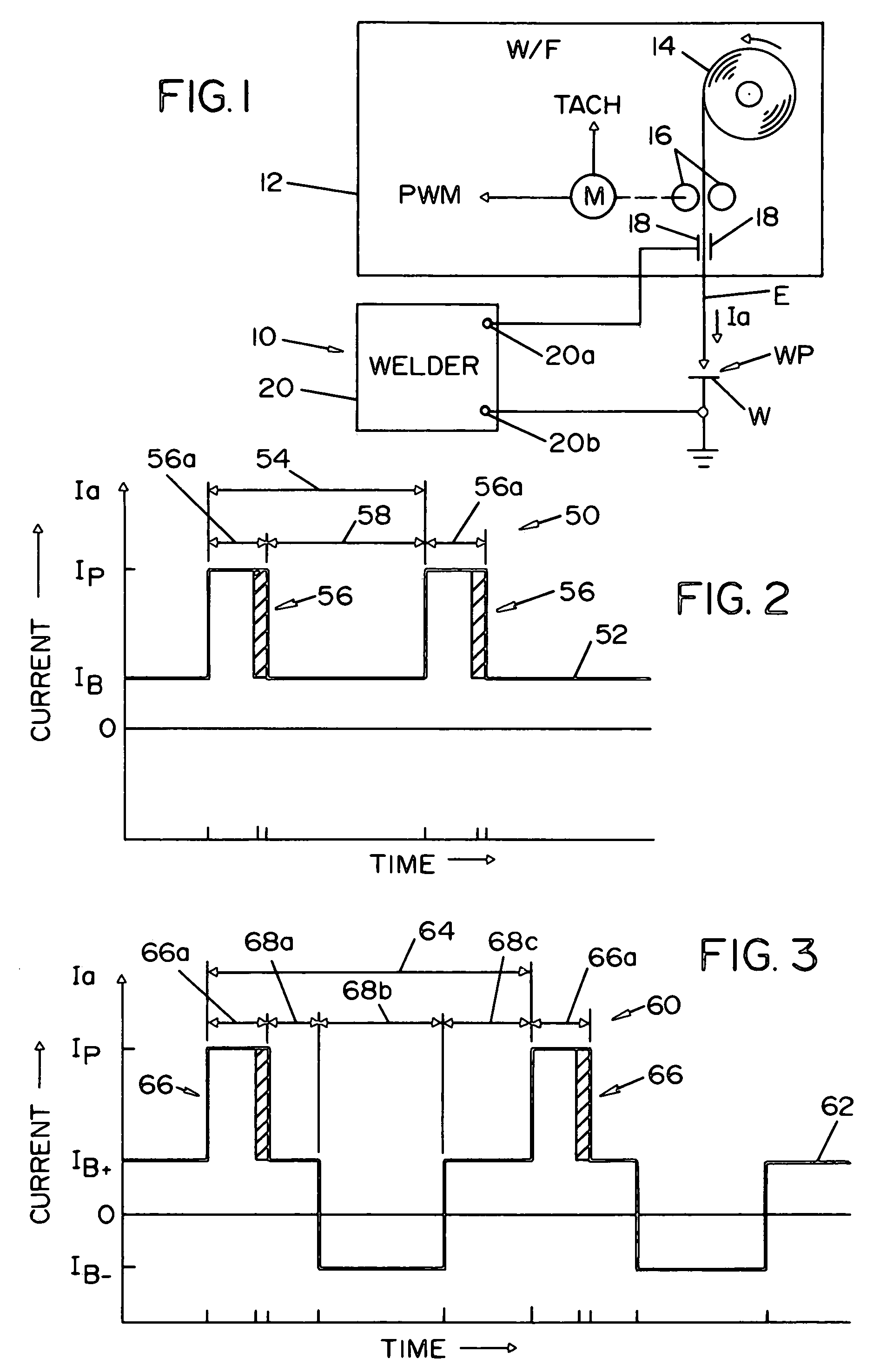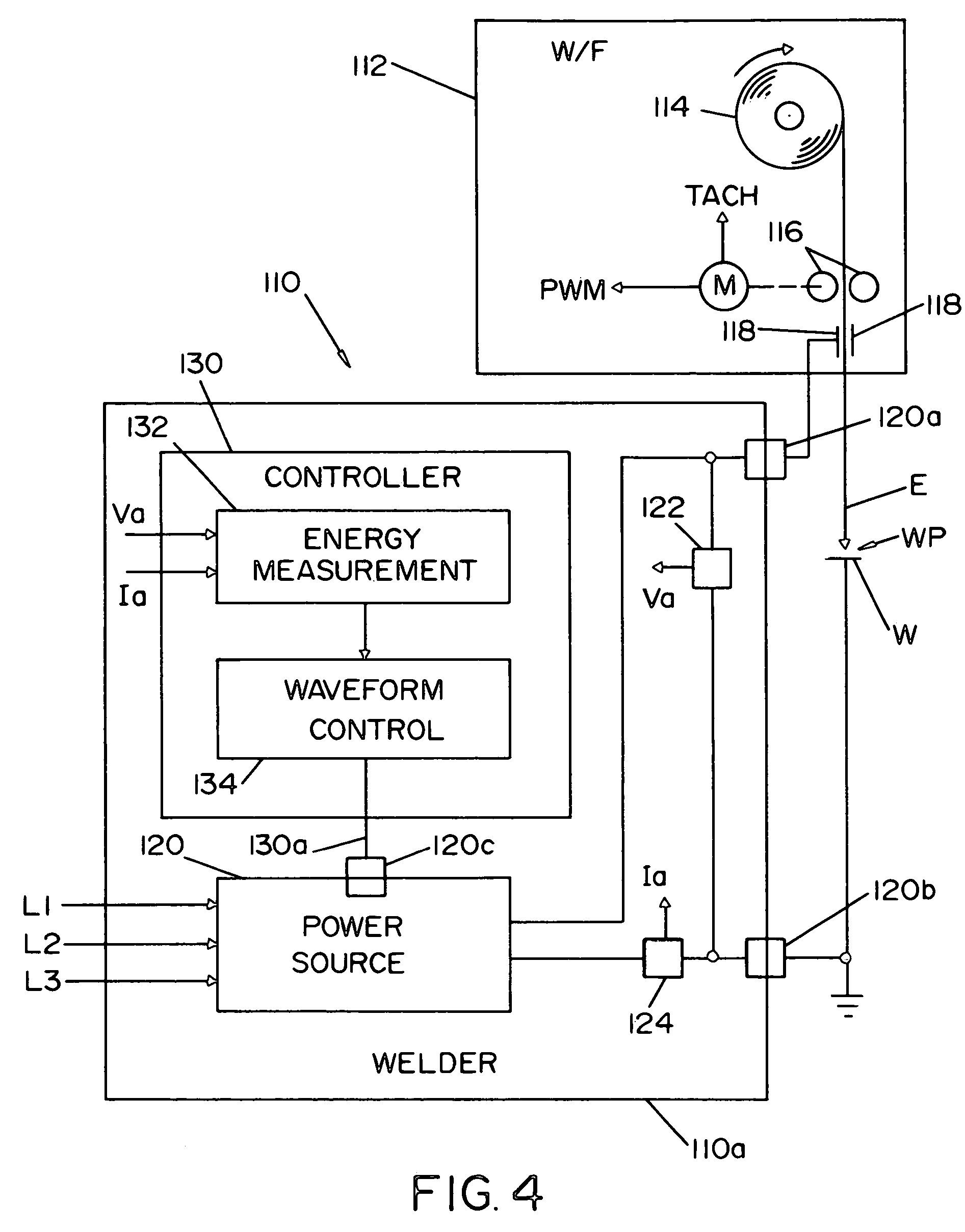System and method for pulse welding
a pulse welding and pulse welding technology, applied in the field of pulse welding, can solve the problems of low deposition rate prone to burnout of thin workpiece materials, and high heat input of short-circuit welding techniques
- Summary
- Abstract
- Description
- Claims
- Application Information
AI Technical Summary
Benefits of technology
Problems solved by technology
Method used
Image
Examples
Embodiment Construction
[0026]One or more embodiments or implementations of the present invention are hereinafter described in conjunction with the drawings, wherein like reference numerals are used to refer to like elements throughout and wherein the illustrated structures and waveforms are not necessarily drawn to scale. The invention relates to pulse welding methods and apparatus, and provides for controlled initiation of a transfer or release pulse based on the energy applied to a welding electrode in each pulse welding cycle. In this regard, the invention is directed to pulse welding processes and equipment in which a welder power source applies a welding signal to a consumable welding electrode in a succession of welding cycles, each cycle having a melting condition during which molten metal forms at the end of the electrode as a result of welding current from the power source, and a transfer condition in which a high current pulse in the welding signal causes the molten metal to separate from the el...
PUM
| Property | Measurement | Unit |
|---|---|---|
| energy measurement | aaaaa | aaaaa |
| energy | aaaaa | aaaaa |
| voltage | aaaaa | aaaaa |
Abstract
Description
Claims
Application Information
 Login to View More
Login to View More - R&D
- Intellectual Property
- Life Sciences
- Materials
- Tech Scout
- Unparalleled Data Quality
- Higher Quality Content
- 60% Fewer Hallucinations
Browse by: Latest US Patents, China's latest patents, Technical Efficacy Thesaurus, Application Domain, Technology Topic, Popular Technical Reports.
© 2025 PatSnap. All rights reserved.Legal|Privacy policy|Modern Slavery Act Transparency Statement|Sitemap|About US| Contact US: help@patsnap.com



